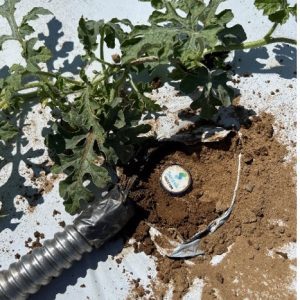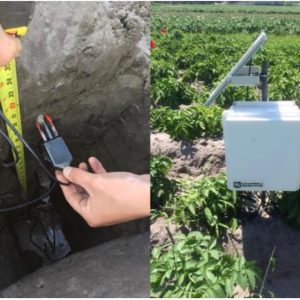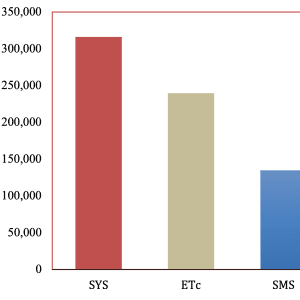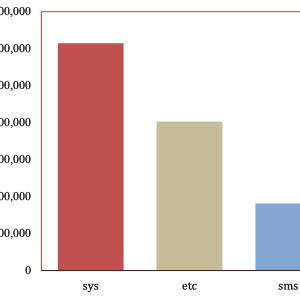Crop Production

Proper irrigation management in vegetable crops is essential to ensure crop development and potential yield, regardless of the growing system. Most vegetable crops are drip irrigated, where water is conveyed to the plants’ root zone via a drip tape line installed along the planted row. However, vegetable crops may also have overhead irrigation. In these systems, water is conveyed to plants via sprinklers using center-pivot, linear movement sprinklers, stationary or moving guns, and others. Overall, drip irrigation operates under low pressure by distributing water via the emitters installed along the drip tap in low flow rates; water is applied precisely in the crop root zone. Contrarily, overhead irrigation requires high pressure and water is applied using nozzles that distribute water droplets and simulate rainfall events on top of the crop canopy.
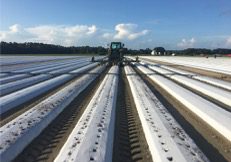
Plastic mulching with drip irrigation.
Regardless of the irrigation system type, poor irrigation management can result in over- or under-irrigation of any crop, which is also known as crop water stresses. If water is not properly applied, vegetable crops may experience water stress in two different ways
- when there is a lack of water (water deficit)
- when there is an excess of water (soil water saturation)
Water deficit is caused by poor irrigation timing or insufficient volumes of water being applied, limiting soil water availability to plants. Soil water saturation is caused by an excess soil moisture that may be caused by long periods of irrigation or excessive water volumes being applied, which induces nutrient leaching. In both cases, vegetable crop development will be negatively impacted, and yield reduced. Consequently, a proper scheduling of irrigation events is an important management in vegetable production.
Irrigation Scheduling
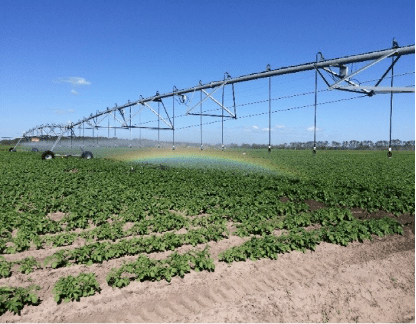
overhead sprinkler irrigation
Below are the most common methods of irrigation scheduling:
- Systematic irrigation (SYS): This method consists of managing water applications on a time or volume basis. Water is applied every day for the same time-period or volume, regardless of crop growth stages or weather condition.
- Irrigation using the crop water demand (ETc): This method supplies water to plants according to the crop evapotranspiration, also known as the crop water demand, and changes according to the crop growth stage. Irrigation water is, thereby, applied to replace volumes of water uptake by plants.
- Irrigation using soil moisture sensor (SMS): This method requires the use of sensors to monitor the soil water status in the crop root zone; thus, water is applied to maintain a specific range of soil water available to plants.
- Example of soil moisture sensors.
- Example of soil moisture sensors.
Particularly, the systematic irrigation is vastly used by growers, but it might not be the best option. Preliminary studies conducted in Alabama have shown that water saving in watermelon production could be 45% and 70% for irrigation scheduling using the crop water demand and soil moisture sensors compared to the systematic irrigation, respectively (Figure 3). In organic tomato production, water savings were 44% and 57% for irrigation scheduling using the crop water demand and soil moisture sensors compared to systematic irrigation, respectively (Figure 4).
In both studies, crop yields and fruit quality were similar or the highest for the irrigation scheduling using crop water demand and soil moisture sensor. Furthermore, these methods of irrigation scheduling have also proven to increase fertilizer use efficiency and reduce cost of production.
- Figure 3. Comparison of irrigation water use among systematic (SYS), crop water demand (ETC), and soil moisture sensor (SMS) irrigation scheduling for watermelon production.
- Figure 4. Comparison of irrigation water use among systematic (SYS), crop water demand (ETC), and soil moisture sensor (SMS) irrigation scheduling for tomato production.

